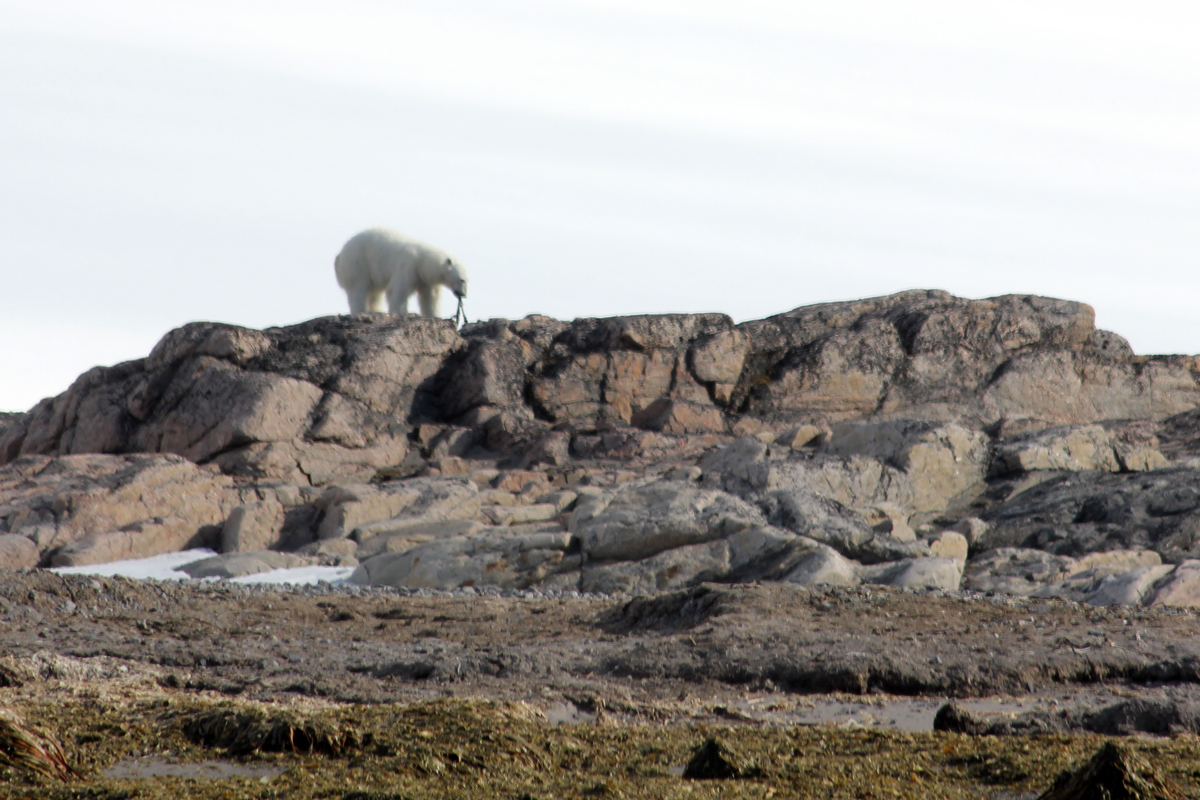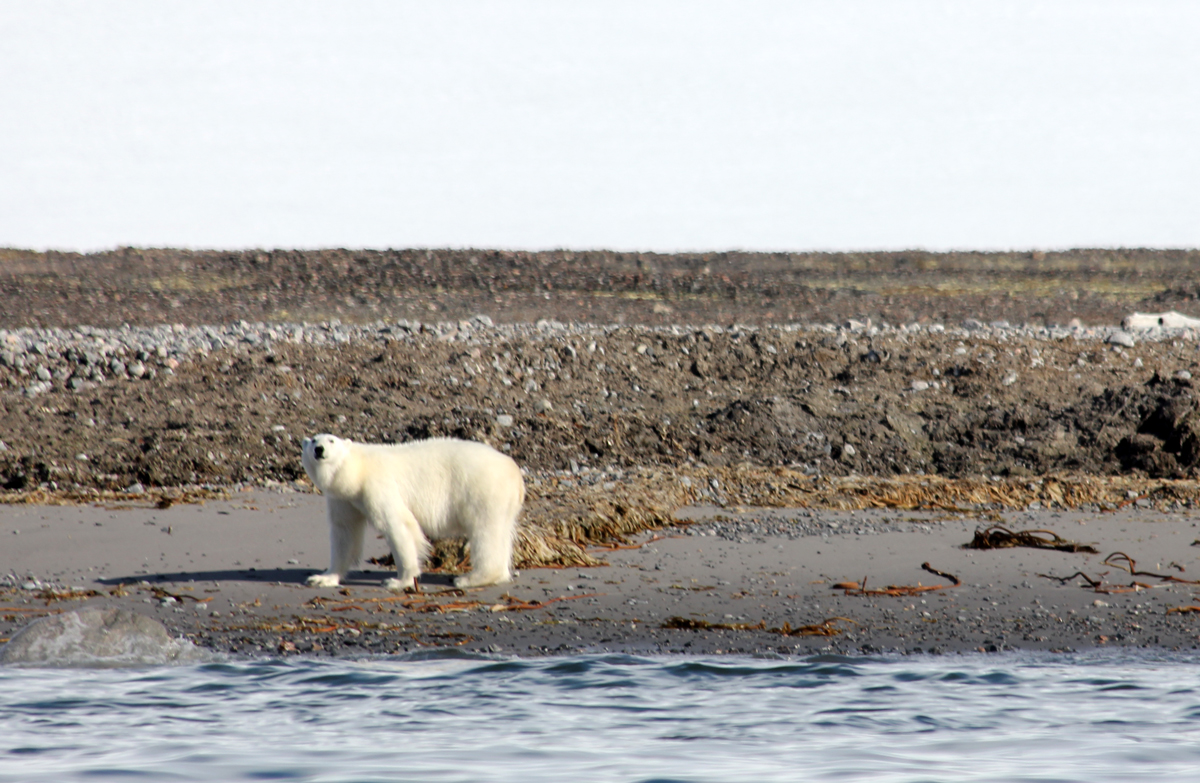 Polar Bears Galore In Svalbard
Polar Bears Galore In Svalbard
Hoping for a glimpse of the illusive polar bear, Wildfoot’s Senior Travel Advisor Debbie Grainger recently set sail for Arctic waters, bound for the Norwegian archipelago of Svalbard.
Here she fills us in on the highlights of her remarkable wildlife adventure.
Ask anyone what wildlife they most want to encounter on their trip to the Arctic, and the majority will answer – the Polar Bear. And is it any wonder? On my recent trip to Svalbard, we got to see 18 of these magnificent creatures during our 9 day trip!
My trip circumnavigated Svalbard, starting and finishing in Longyearbyen, taking us to 81 degrees north 44’ and we sailed 1314 nautical miles which equates to 2433km.
Longyearbyen is a small coal-mining town on Svalbard, also known as Spitsbergen. At a latitude of 78 degrees north – just 1316km from the North Pole, and a 3-hour flight from Oslo. There are a few shops, bars and restaurants as well as a museum which is definitely worth a visit. You learn about the history of Svalbard, the fight of the expedition teams to get to the North Pole, how the mining industry steered the development of the community and the build-up of services. The whaling that took place from 1612, and the hunting and trapping of any fur-bearing animals.
There are many vessels to choose from when planning your Arctic adventure. From small sailing ships with just 12 passengers to the larger ships that take up to 300 passengers. The ship that I sailed on was the Sea Endurance, recently re-named the Quest. It’s a small, mid-range vessel with 53 passengers, 26 cabins all with portholes and private facilities, a dining room and lounge. The lounge is a large, room with huge panoramic windows, and leads right onto the observation decks. Passengers can visit the Bridge whenever they like to chat with the captain and his crew, and the guides encourage you to ask questions about the wildlife, the plants, the geology and history.
Meals are at set times and are buffet-style for breakfast and lunch, whilst the evening meal is waiter service. All dining was freedom dining, so you could sit wherever you wanted and with who you wanted. Also, the guides would join any empty spaces at the tables once all the passengers were seated, which I thought was a lovely idea, as you got to know them better. The food was always excellent, with a great choice – A BBQ was arranged for one of the evenings, however the weather wasn’t very good that day, so we had it inside the dining room!
There were a couple of passengers who had walking difficulties, but they were accommodated so well in the walking groups. Their land trips consisted of short walks along the shore-line, looking at the various flowers, bird-watching and taking close-up photos of the wildlife that they encountered. I noticed how well they were looked after when it came to getting in and out of the zodiacs too.
So back to the Polar Bears. One of our lectures was about these animals, and it made us realise how vulnerable their lives are; How much they rely on the ice so that they can catch their prey.
They are the largest bear species – males can reach, weights of 300-700kg, whilst females weigh 150-350kg. Contrary to belief, they are not snow-white in colour, but more of a creamy to dirty yellow. In fact, the longer they spend on land the dirtier the coat will be.
Telling the difference between male and female, especially from a distance, is quite difficult for the untrained eye. The males have a strong neck and a broad skull base, whilst the female bear have a slimmer neck and a longer skull. Also, if you can see the bridge of the nose, it tends to be shorter and quite often scarred with the males.
Polar bears are marine mammals. They are brilliant swimmers and can cover huge distances without any problems – distances of more than 100 kilometres have been recorded. The long guard hairs form a watertight outer coat over a soft and fluffy undercoat which traps a layer of air against the skin; this allows it to swim well without getting wet to the skin. Once out of the water, a quick shake leaves the outer coat almost dry. The guard hairs are air-filled and exceptionally strong.
The real, true habitat for the Polar Bears is the dense drift ice, the frozen fjords and bays. This is where they spend most of their life and have the best chance of catching their prey. A well-fed polar bear with a thick layer of fat, can survive up to eight months without food! So, what is the preferred food for the Polar Bear? A freshly caught seal (particularly the ringed seal) on the ice, as it takes less physical effort than catching them in the water; But they are opportunists and use many techniques to find food; walrus; white whales; reindeer; chicks and eggs from the nest and vegetation. They have a very keen sense of smell and can even detect seal pups under the snow!
Polar bears are generally loners, living possibly the loneliest life on the planet, unless there is an abundance of food. The other time that there is a gathering of numbers is during the mating season. The mating season is in April and early May – the males will stay with the female for a couple of days for repeated mating, but then the male takes no further part in the process and goes his own way. Implantation is delayed until September, when the female takes to a den excavated in the snow. Late December one or two cubs are born in the den. At birth, the cubs are the size of a rat, almost naked, and blind. But their diet of rich milk – 30% butterfat – means that by the time the mother and her young family leave the den in late March/early April, the cubs have increased from a birth weight of 680g to a healthy 25lb. The mother will not have had any food for the last 4 months, so good hunting results are critical, and only the experienced mothers will be able to raise the cubs to reach the age of one year old. The mother will look after the cub/s for 2 years, teaching them their predatory trade, before abandoning them to make their own way over the ice and the polar seas. Mortality is high again during the first year of independence. The female Polar Bear breeds only once every two years.
The early 1800’s saw commercial killings of Polar bears, which led to the steady decline in their numbers. It was 1973 before the Polar bears became a protected species under the International Agreement on the Conservation of Polar bears. These days, it is global warming that is the biggest threat to the Polar bear. If the sea ice continues to decline at the current rate of about 13% per decade, then the Polar bears will suffer a loss of habitat, and consequently food. The fact is simple – the bears depend on the ice, as no ice, means no seals. No seals means no Polar bears.
Find out more about our Arctic trips here



